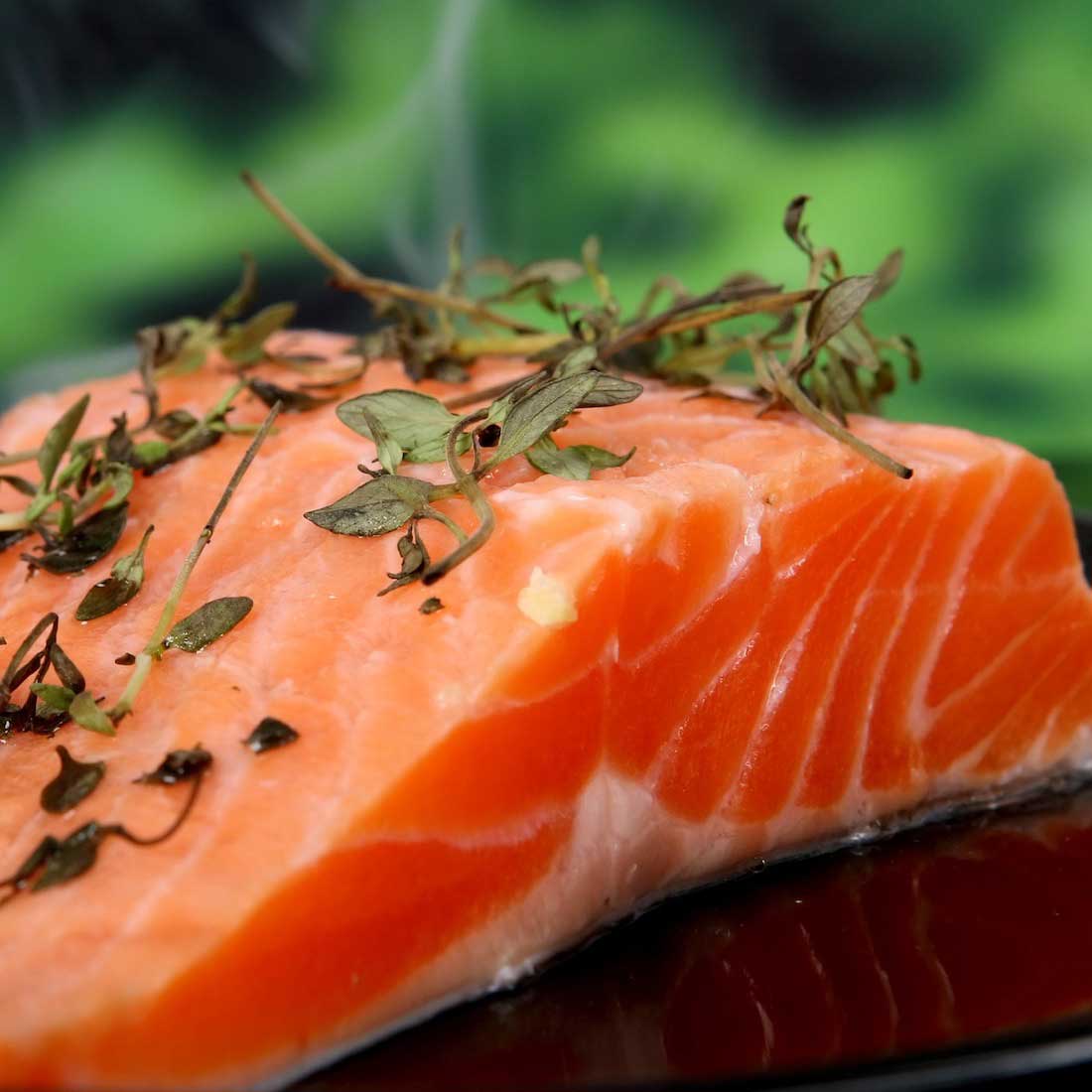Not all fats are created equal. There are good fats and there are bad fats.
For years we were told to avoid fats. Low fat foods and non-fat versions started lining the grocery store shelves. Unfortunately, food manufacturers didn’t use all the right information. It’s not so much an issue of eating fat, but rather an issue of eating the right types of fat.
Essential fatty acids (EFAs) are a good type of fat. They need to be included in our diet because our body can’t produce them. The two essential fatty acids that we should be eating regularly include omega-3 fatty acids and omega-6 fatty acids.
These fats are essential for brain development, skin health, hormone production and blood circulation. They also play an important role in regulating inflammation in the body.
In a healthy diet, the ideal ratio of omega-6 to omega-3 ratio is 1:1. Unfortunately, in the Standard American Diet (SAD) it’s common to see this ratio sit at 20:1 or higher.
Most people have a higher intake of omega-6 fats than they do of omega-3 fats. This is likely because omega-6 is found in foods like soy, corn, canola, and sunflower, which are often added to packaged and processed foods in some form.
Though we certainly do need omega-6 fats in our diet, too much can end up contributing to inflammation in the body. On the flip side, omega-3 fats are excellent at reducing inflammation. That’s why keeping a balance between the two types is so important.
Including adequate amounts of omega-3 fats in your diet depends on a couple of things. Firstly, it depends how much omega-6 fats you’re consuming. If you consume a lot of omega-6 fatty acids, you’ll have to consume a lot of omega-3’s to reach the right ratio. Secondly, if you’re body is in a state of inflammation (such as arthritis, heart disease or psoriasis), you may benefit from a slightly higher ratio of omega-3 to omega-6.
In order to get the anti-inflammatory benefits of omega-3’s, a holistic approach would be to reduce your intake of omega-6 fatty acids if it’s quite high, while also increasing your omega-3 fatty acids. That way you’re working to balance from both sides, rather than always playing catch up. The best way to limit onega-6 fatty acids is to reduce the processed foods in your diet.
Sources of Omega-3 Fatty Acids
You can increase your omega-3 intake by incorporating omega-3-rich foods and using supplements. Here are a few options you can try:
1. Eat more fish
Fish is an excellent source of anti-inflammatory omega-3 fats. Mackerel, salmon and sardines are some great options that are also generally low in mercury and toxins. When you’re choosing fish look for smaller varieties which tend to contain less pollutants, and always opt for wild-caught fish, if you can.
2. Try chia seeds and flaxseeds
Nuts and seeds can be a good source of omega-3 fats, but chia and flaxseeds are two of the best. They’re two of the highest sources of plant-based omega-3 fats, and they’re also loaded with fiber. Chia and flax can easily be added to smoothies, oatmeal or baking. Combined with water chia and flax both form a gel-like texture that can be used to bind ingredients as a substitute for an egg. Try mixing 1 tbsp ground flax or chia with 3 tbsp of water and let it sit 5 minutes. Add it to baking to replace 1 egg.
Here’s a tip: Flaxseeds have an extremely tough exterior that the body can’t break down. In order to absorb the omega-3 fatty acids, make sure you grind your flaxseeds fresh. Once the seeds are ground up, the oils can be sensitive to rancidity from light and oxygen exposure. If you don’t want to grind your flax daily, try grinding a week’s worth in a coffee grinder, and storing it in the freezer to stay fresh.
3. Supplement with omega-3 oils
If you don’t include fish or seeds in your diet often, supplementation may be the best way to increase your omega-3 intake. There are lots of different options of omega-3 supplements on the market including mixed fish oils, salmon oils, and cod liver oils. If you don’t eat fish, there are also plant-based omega-3 oils that come from algae. Make sure the product you’re buying is high quality, sourced ethically and responsibly from clean waters and tested for heavy metals and toxins.
Chew on this
Omega-3’s are an essential fatty acid that should be included in your diet. They help to reduce inflammation and support the health of the brain, heart and skin.
You can get more omega-3s in your diet by supplementing or eating more fish, and including nuts and seeds. Chia seeds and flaxseeds are two of the best plant-based sources. Hemp seeds and walnuts are also good options.
How do you get omega-3 fats in your diet? Share in the comments below.




